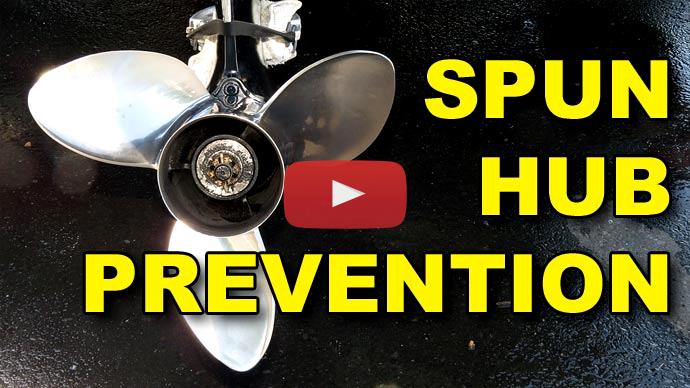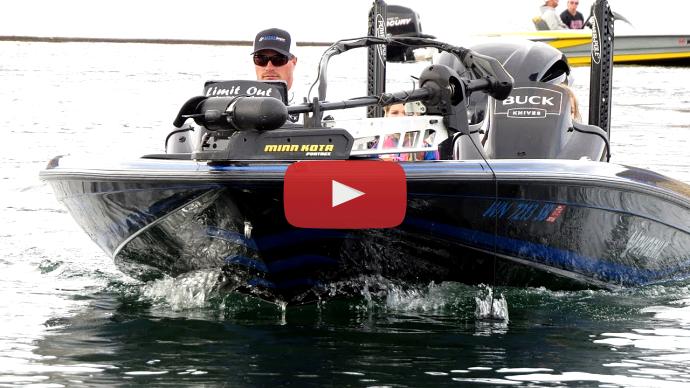So, you have batteries on your boat, and you need to charge 'em after you've been fishing. Well, should you leave the charger plugged in all the time? Or do you need to unplug it when the batteries are full, and maybe top 'em off every once in a while? Like, that's the big debate that I see in our forums [SP] an awful lot. But along with that, it's like, what are the proper ways to charge your batteries? Because oftentimes the argument that I hear whether you should leave it plugged in or not, is, you know, "Oh, that way is better than the other," or, "My way is the best way. The other way sucks."
A lot of the reasons why they've had problems is because of the way that they're charging the batteries, not this methodology of leaving it plugged in or not. So, I wanna dive into all this stuff and try to clear up some of the myths and misconceptions here, and help you decide what is the best way for you to take care of your batteries on your boat.
First of all, you gotta look at the charger you have. Take a look and see if it's got float or maintenance mode on it, which by the way, we're not talking about lithium batteries here. I wanna be really clear. Lithium batteries are a different beast. They require a different kind of charger. A different methodology. So, if you're looking that way, you know, how to charge your lithium battery. Well, this isn't the video for you. Sorry.
All right. Now that all us lead heads are here, let's talk about charging our lead-acid, you know, our wet-cell batteries, our AGMs, and gel cells is what we're talking about. So, battery charger, take a look and make sure it's got maintenance mode or a float mode on it. We're not talking about trickle charge, that's an often misused term, trickle charge charger is a different type of charger, so I don't wanna get into that here. But most of the battery chargers out there are, you know, they got a maintenance mode or float mode. That's the type of thing you're looking for. What that does is once the battery's charged to a certain level, it turns the charger off and waits. And when the battery goes below a certain amount, then it turns back on and pumps that battery back up to the proper level. That's what float mode or maintenance mode does.
You'd be surprised how many chargers don't have that. In today's world, you would think every charger has that. They don't. I was recently at the hardware store, I had to get a charger for entirely different purpose, and there was probably about five or six different brands there, and I was surprised of all those only two of them actually had those modes on 'em, the rest didn't. So, if you're the kind of guy that looks at, "Oh, here's a bunch of battery chargers, I'm just gonna grab the cheapest one, they all do the same thing." It probably doesn't have maintenance mode or float mode on it. That means you cannot leave it plugged in all the time. If you did, you're basically, you're gonna ruin your batteries potentially within a few hours. It's not designed to leave it plugged in after the batteries have reached full charge. You have to unplug them. You're gonna ruin your batteries otherwise. So, that kind of answers your question for that, but let's continue on. Most chargers for boats, especially the ones that are built into your boat, come with it. Those do have that mode.
Key things about using these chargers that you need to know about that affect the performance in no particular order. The extension cord that you use. A lot of guys don't think about this. So, a lot of these chargers, the cord won't reach, oftentimes not even past the boat gunnels, let alone to the nearest outlet. So, you have to use an extension cord to plug into them. Well, there are some things you need to know about. There are some laws about electricity that you cannot overcome. First and foremost, the longer the extension cord, the more impedance there is, the less power is at the business end of the extension cord, than at the outlet. So, a 100-foot cord will have less power than a 50-foot cord will have less power than a 25-foot cord all things being equal. That's just, that's resistance. That's what happens.
So, that's rule number one. So, if you are 15 feet away from an outlet, don't use a 100-foot cord to plug into it. I see a lot of guys do that or use a 50-footer or something like that. Use the shortest extension cord you can get away with to reach the plugin, the closest plugin. The second thing you need to understand is the thinner the wires, and the thinner the gauge inside that extension cord, the more resistance there is, the less power it gets to the business end of the cord. So, the way this works is 16-gauge doesn't mean bigger wire, it means smaller. So, 16 gauge is pretty thin. It's half the size as an 8-gauge, roughly speaking. So, a 16-gauge will have less power at the business end than an 8-gauge extension cord all things being equal.
So, they also cost a lot more. So, if you're the kind of guy that says you got two 50-foot extension cords side by side, this one's cheaper than this one, and you just say, "I'm gonna grab the cheapest one," you've likely got a 16-gauge 50-foot cord. The ones that have thicker gauges on 'em cost more. So, lemme give you my quick recommendation on this. For a 50-foot and shorter cord, I would go for a 12 to 14-gauge cord, and for a 100-foot, I wouldn't go any smaller than a 10-gauge. If you can get an eight even better. They're a little difficult to find sometimes and they are expensive. Now, to be fair, some guys that really know their electricity are gonna say, "You don't need that kind of, you know, just for a charger. A charger doesn't draw that much power. A 16-gauge will work." I would argue about the 16-gauge. I would still at least do 14, but I also, if you're like me, you don't get extension cord dedicated to your charger. You use that extension cord for a variety of other things. Say plugging in a drill, or a saw, or maybe you're gonna vacuum your car or weed-eat your lawn, whatever. Those devices draw a lot more power. So, you're gonna need a thicker gauge anyway for those. So, that's why I go with a thicker gauge extension cord. Now it's universal. I can use it for a variety of things and not worry about it, so... And just a thicker gauge extension cord is easier on your charger because the less power that's getting to your charger, the harder it has to work, and the longer it takes the batteries to charge. It's a little bit more work on your batteries too when it takes that long to charge. Good example is if you're at a campground, and it's full, and this is a tournament, you plug it in that evening to charge, and when you get up in the morning, your batteries might not be all the way charged.
Whereas if you did it at home for the same amount of period, they'd be charged no problem. And you're like, "Why?" Well, you may be at the end of that run, or towards the end of that run, plus you got everybody plugged into it that leading up to you. So, there's not a whole lot left over by the time it gets to you. That's the concept of having a 100-foot 16-gauge extension cord versus a 100-foot 8-gauge extension cord. That's kind of the difference there. Or I'd put another... Actually, I should say it the other way around is a 100-foot 16-gauge cord versus say a 25-foot, 10-gauge cord that's plugged nearby, right? It's that power difference you're gonna get. So, don't just... The problem is, is that you can wear out your charger sooner rather than later. And also your batteries by undercharging them, or making them work a lot harder to get to a full charge. Another thing that's really important, regardless of the way you charge your batteries is charge 'em as soon as you get off the water, as soon as you can. Don't leave your batteries in a state of discharge for a long period of time. What that will do is shorten the lifespan of your batteries, and also over time it will lessen their capacity, and you won't get a full day's worth of charge for fishing. So, make sure that as soon as you get off that water, plug those batteries in, get that charger going as soon as you can. The other thing to consider is when you are charging your batteries, make sure your breaker switches are turned off. The power switches going to your batteries.
There's typically two in a bass boat. One's for a cranking battery and the other's for your trolling motors. But some boats have more than that. Mine, for example, has three. The third one is just for my electronics, just for my depth finders because they're entirely different beasts, but there are other boats that may have four or more. So, make sure you know where yours are. They're typically located in the battery compartment. Make sure they're turned off. And that's for two main reasons. One is when you first turn your charger on, it goes full power. It's like everything on, here we go. This is what consumer chargers do. They first start at full power, and then they diminish over time the amount of power that's given to the batteries. As the battery level goes up, the amount of power being applied goes down.
If you have all your breakers open, it's not a power surge per se, but there is a possibility of the power going back down through your electrical wires and damaging your electronic equipment, not necessarily as a big brownout or boom, you know, because it's gonna knock 'em out. But over time it could degrade your electronics and shorten their life or cause other problems. The other reason is if you've got your breakers on, likely there's power being drawn. If you have power poles, you've got Bluetooth that's running [inaudible 00:09:33]. If you've got a stereo even it's off, but it has electronics in there that will draw a little bit of power from your batteries. Same thing, you got a clock on your boat maybe, there are other electronics that if you leave the breakers on, they're going to be drawing power from your batteries.
And when you're trying to charge your batteries at the same time power's being drawn from them, it's a lot more work on for your charger and on your batteries. So, just best performance, you wanna make sure they're all turned off. Now, all that being said, let's get back to this conversation about leaving it plugged in all the time or not. Technically speaking, if you have a charger that is designed for maintenance mode, trickle mode, oh sorry, maintenance mode, float mode. Also, one thing I've failed to mention, I wanna bring it up real quick. There is a difference between wet-cell, AGM, and gel cell batteries. They all are lead-acid batteries, but their composition's a little bit different. Most battery chargers that do leaded-acid batteries, it's fine, you can use 'em on all three. However, some actually have a setting between those three.
And if you have that great, make sure you have it set to the right setting. That's even better. It's not I don't think a requirement, I wouldn't call it a requirement, but it is better if you can match the battery charger to the exact batteries that you have. Now leaving it on or not. If it has that maintenance mode and you have it, you know, it's lead-acid batteries, you can leave it plugged in all the time technically speaking. Now if you have flooded batteries, they're wet-cell batteries, you do have to top off every once in a while. Make sure you got water in there because you could dry out over time. That's kinda a risk that you have. But most of the maintenance-free batteries, the AGMs, you can plug 'em in and leave 'em in all the time. That said, what I'm gonna tell you here is of personal preference. I used to plug it in all the time. I used to be of that mindset. Everything I just told you is what I do, is how I charge my batteries. When I first got my boat, my batteries lasted four to five years. The charge would last all day long, no problem. I left the charger plugged in all the time.
Everything was gravy. It was great. Not a problem. The problem is I burned through two chargers in five years, and we're not talking cheap chargers. These are the ones that come with the boat. These are brand name, high quality, been around for decades, they have a good reputation. This isn't cheap stuff. You know what I'm talking about, guys, you've seen them in these boats. It's standard in all bass boats. It's an excellent brand of chargers, but I burned through two of 'em in five years leaving it plugged in all the time. So, when I replaced the last one, I said, "Look, I gotta do something different." I don't know about you guys, but, you know, these are expensive units. I don't have that kind of cash. When you're talking between the unit and also the... You know, somebody actually doing it for you, taking the mechanic to do it. It can run you about 1,000 bucks. I don't have that kind of cash hanging around. So, I said I gotta do something different. And what I did is I went to plugging it in until the batteries are charged all the way, then unplugging it. And if the boat hasn't been used for one to two weeks, then I'll plug it in and top the batteries off and unplug it again. I don't leave it plugged in all the time. Battery performance was exactly the same. Again, four to five years longevity. And the charge was, you know, all day long, didn't lose any of that. The capacity was great, not a problem.
That was 14 years ago. I still have the same charger. Something to be said. Same brand charger, same kind of charger, same batteries. Okay. So, something to be said about that. I can't say it's scientific, but that's why I unplug them when they're fully charged. I'm not saying if you leave 'em plugged in all the time, it's wrong. You can go ahead and leave it plugged in if that's what works for you, not a problem. I'm not gonna argue with you on that. I'm just saying why I do it that way. So, I hope that helps. For more tips and tricks like this. Wait, hold on. If you watch this video this long, then you're gonna for sure wanna watch one of these two videos. Now, this one here I handpicked for you. This is the one I think you should watch next, but this one here is what YouTube thinks you should watch next. Either way, I'm in both. So, I'll see you in a few seconds.



